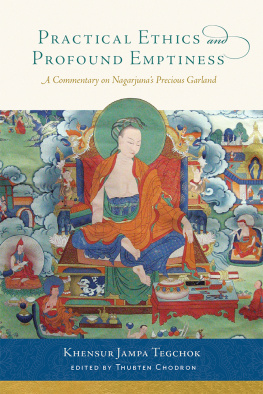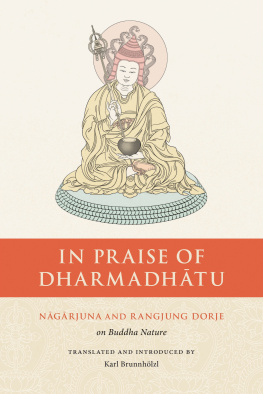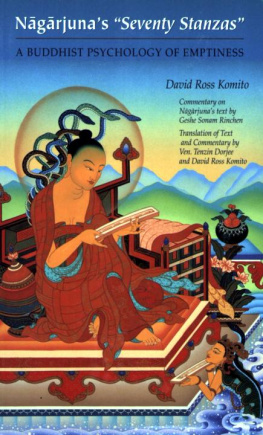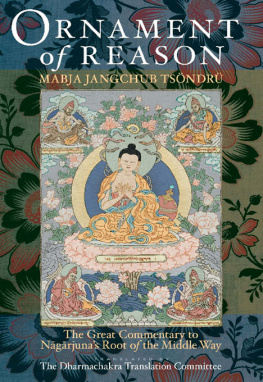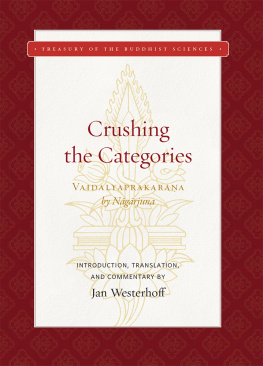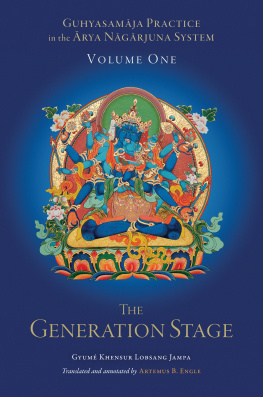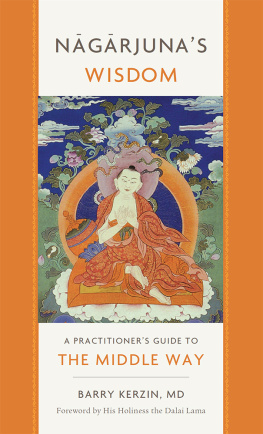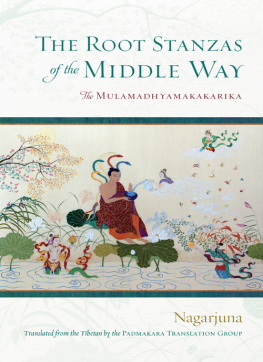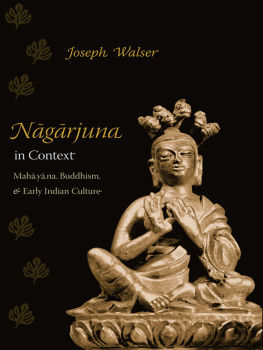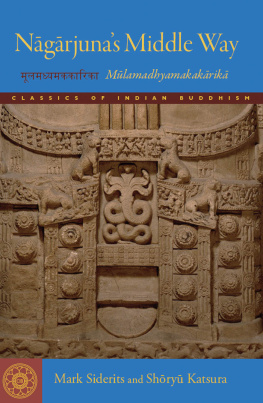Praise for
PRACTICAL ETHICS and
PROFOUND EMPTINESS
Khensur Jampa Tegchok was renowned in life as a Madhyamaka scholar with a profound understanding of emptiness. His teachings on Nagarjunas Precious Garland, rendered into clear and entirely readable English by Bhikshu Steve Carlier and Bhikshuni Thubten Chodron, leave no room for doubt that Khensur-la had thoroughly unraveled the relationship between the conventionally functioning law of actions and their effects and the ultimate reality of the lack of inherent existence of self and all phenomena. This book is a must for any Dharma practitioner trying to do the same.
JOAN NICELL, EDITOR OF PURIFICATION IN TIBETAN BUDDHISM
Though written to a king and composed over eighteen centuries ago, this poetic text by Nagarjuna, the Precious Garland, offers advice like no other, for it guides us in leading a wise, compassionate, and ethical life even in tumultuous times like our own. A clear, readable, and urgent call to ethical action. This work offers amazing spot-on advice for our times, especially for our leaders and policy-makers.
JAN WILLIS, AUTHOR OF DREAMING ME

Buddhist master guides us through one of Nagarjunas seminal works.
A beautifully clear translation and systematic explanation of Nagarjunas most accessible and wide-ranging work. Dharma students everywhere will benefit from careful attention to its pages. G UY N EWLAND , author of Introduction to Emptiness
We are fortunate to have such important and instructive texts as Nagarjunas Precious Garland, which is here profoundly explained by the eminent scholar Khensur Jampa Tegchok. The world has never been more in need of ethics and wisdom, so this timely book is highly recommended for all who seek authoritative guidance on the Mahayana path. J ETSUNMA T ENZIN P ALMO , author of Into the Heart of Life

I N HISPrecious Garland, a classic of Indian Buddhist philosophy, Nagarjuna advises a king on how best to secure a happy rebirth while making progress toward the ultimate goal of enlightenment. In Practical Ethics and Profound Emptiness, Khensur Jampa Tegchok walks us through the Precious Garland, drawing out the implications of its arguments and grounding its advice in our world today, with equal measures of penetrating explanation and inspiring encouragement.

Serious students of Buddhist philosophy will be delighted by the opportunity this book offers to gain a more profound, detailed, and multifaceted view of the conceptual core of the Madhyamaka tradition. J AN W ESTERHOFF , Oxford University
K HENSUR J AMPA T EGCHOK (19302014), born in Tibet, was a Buddhist monk from the age of eight and completed the highest training for Tibetan scholar monks. In 1993, by appointment of His Holiness the Dalai Lama, he became abbot of J College of Sera Monastic University in India. He was a beloved teacher who taught worldwide.
T HUBTEN C HODRON is the founder and abbess of Sravasti Abbey in eastern Washington and has an active teaching schedule worldwide. She is the coauthor, with the Dalai Lama, of Buddhism: One Teacher, Many Traditions and teaches Buddhism and meditation worldwide.
Editors Preface
DEAR READER, you are about to embark on a wondrous journey into the mind of one of Indias greatest Buddhist thinkers and practitioners, Arya Nagarjuna. In Precious Garland, he gives teachings to a king, instructing him on both Madhyamaka philosophy regarding the nature of reality and practical matters such as how to govern the kingdom. It is evident by the way Nagarjuna addresses the king that they have a close relationship. The king is receptive to hear the teachings, and being fond of the king as well as compassionate toward his subjects, Nagarjuna teaches the king in a straightforward, no-holds-barred manner.
While Nagarjuna addresses the king directly, he explicitly says that the teachings are meant for everyone: people living then as well as many generations that will come afterward. The Dharma teachings themselves apply to everyone at all times and locales and of all cultures. In contrast, in a few places Nagarjuna gives advice that corresponds to the societal organization and customs of ancient India but needs to be adjusted to fit present cultural norms and values in the West.
If the teachings are meant for everyone, why, then, were they given to the king? Someone who has a lot of worldly power can influence a great number of people for better or for worse. In a kingdom where leaders do not change every few years due to popular election, a leader who admires and practices the Dharma can make good policies that will remain in place for decades. Viewed by the populace as being like a protective and wise parent, such a leader can encourage his or her subjects to live ethically and cultivate kindness. King Ashoka of ancient India (304232 BCE) is an excellent example of this. Through his generosity and philanthropy, as well as his edicts and pillars containing wise advice, he instructed his subjects and brought peace to the land.
THE TREATISE AND ITS AUTHOR, COMMENTATOR, AND TEACHER
Precious Garland of Advice for a King, usually referred to as Precious Garland, is one of Nagarjunas great treatises. Preceding the stages of the path literature (lamrim) popular in Tibet by twelve or thirteen centuries, Precious Garland is the basis for much of the material in other Indian treatises. Many of the points in Precious Garland are further elaborated in Shantidevas Engaging in the Bodhisattvas Deeds (Bodhicharyavatara), Chandrakirtis Supplement to the Middle Way (Madhyamakavatara), and Asangas Compendium of Knowledge (Abhidharmasamucchaya). Precious Garland is also a source text for the lamrim teachings.
The principal theme of Precious Garland the method to attain higher rebirth as well as the highest good of liberation and full awakening is reflected in the lamrims division of practitioners into three capacities. The goal of a person of initial capacity is to avoid an unfortunate rebirth and to take a higher rebirth. Liberation one aspect of highest good is the aim of practitioners of middle capacity, and full awakening the other aspect of highest good is the goal of practitioners of advanced capacity.
Precious Garland explains that higher rebirth is a steppingstone to liberation and awakening, not an end in itself. Similarly, in the lamrim we are instructed in the practices in common with the initial capacity person in order to attain a series of fortunate rebirths, and on that basis to engage in the practices leading to liberation. But liberation from cyclic existence, too, is not an end in itself, and the lamrim encourages us to become someone of advanced capacity, who, motivated by the altruistic intention of bodhichitta, seeks to attain the full awakening of a buddha in order to most effectively benefit other sentient beings. Then, by engaging in the practices of an advanced capacity being, we will attain full awakening, buddhahood. In short, the meaning, purpose, and practices of the Precious Garland and the lamrim go hand in hand.
Precious Garland was authored by Nagarjuna, the most erudite and renowned scholar-practitioner of ancient India. Although the dates of his life are not known, some people place him circa 50150 CE, others circa 150250 CE. Born in South India, he was well learned in both the writings of the fundamental vehicle and the universal vehicle. His writings, especially the seminal
Next page
